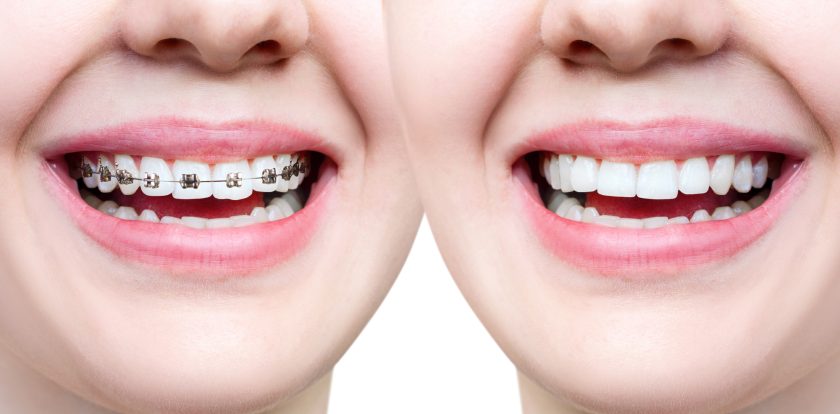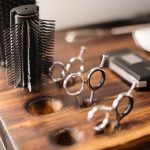Dental braces have long been the go-to solution for correcting misaligned teeth and achieving a beautiful, straight smile. Over the years, advancements in orthodontic technology have led to the development of various types of braces, catering to different needs and preferences of patients. From traditional metal braces to more discreet options like clear aligners, let’s explore the different types of dental braces available today.
Traditional Metal Braces
Metal braces are the most common and recognizable type of braces. They consist of metal brackets that are bonded to the teeth using dental adhesive. These brackets are connected by a wire that exerts gentle pressure on the teeth, gradually moving them into the desired position. Metal braces have come a long way in terms of design and comfort. They are now smaller, flatter, and less noticeable than their predecessors. Many even offer the option of adding colored bands for a fun and personalized touch.
Ceramic Braces
Ceramic braces are similar to traditional metal braces in terms of function. However, instead of metal brackets, they use tooth-colored or clear ceramic brackets that blend in with the natural color of the teeth. This makes them less noticeable, making them a popular choice among adults and teenagers who desire a more aesthetically pleasing orthodontic treatment. Ceramic braces are durable and resistant to staining, ensuring they maintain their discreet appearance throughout the treatment process.
Lingual Braces
Lingual braces are a discreet alternative to traditional braces. Unlike other types of braces that are bonded to the front surface of the teeth, lingual braces are placed on the back surface, making them virtually invisible when you smile. Lingual braces are custom-made to fit the unique shape of each patient’s teeth, ensuring a comfortable fit. They are a suitable option for individuals who want to straighten their teeth without drawing attention to the fact that they are wearing braces.
Clear Aligners
Clear aligners, such as Invisalign, have gained immense popularity in recent years due to their virtually invisible appearance and convenience. Clear aligners are a series of custom-made, removable trays that gradually move the teeth into alignment. They are made from a clear, smooth plastic material that is comfortable to wear and doesn’t irritate the gums or cheeks. One of the key advantages of clear aligners is that they can be easily removed for eating, brushing, and flossing, allowing for better oral hygiene compared to other types of braces.
Self-Ligating Braces
Self-ligating braces are a modern alternative to traditional braces that use elastic bands or metal ties to hold the wire in place. Self-ligating braces utilize specialized brackets that have built-in clips or doors to hold the wire, eliminating the need for additional ligatures. This design allows for smoother and more efficient tooth movement. Self-ligating braces require fewer adjustments and maintenance appointments compared to traditional braces, making them a convenient option for many patients.
Damon Braces
Damon braces are a type of self-ligating braces that offer several advantages over traditional braces. They use a unique sliding mechanism that reduces friction and allows for more comfortable tooth movement. Damon braces come in both metal and ceramic options, catering to the preferences of patients. They are known for their ability to achieve results faster than traditional braces, reducing the overall treatment time.
In-Ovation Braces
In-Ovation braces are another type of self-ligating braces that aim to provide a comfortable and discreet orthodontic experience. These braces come in metal, ceramic, and clear options, allowing patients to choose the level of visibility they are comfortable with. In-Ovation braces have smaller brackets compared to traditional braces, minimizing the discomfort often associated with bulkier brackets. The self-ligating system ensures efficient tooth movement and reduces the number of appointments needed for adjustments.
Removable Braces
Removable braces, also known as functional appliances, are typically used in the early stages of orthodontic treatment, especially in children. These braces are designed to correct jaw and bite issues, rather than focusing solely on teeth alignment. Removable braces are custom-made and can be taken out for eating, cleaning, and playing sports. They are an effective tool for guiding the growth of the jaws and aligning the teeth in younger patients.
Choosing the right type of dental braces depends on various factors, including the severity of the misalignment, the desired treatment duration, personal preferences, and the orthodontist’s recommendation. It is important to consult with an experienced orthodontist who can assess your specific needs and guide you towards the most suitable option.
In conclusion, the field of orthodontics has evolved significantly, offering a wide range of dental braces to address different orthodontic concerns. From traditional metal braces to clear aligners, lingual braces, and self-ligating options, there is a type of braces to suit every individual’s needs and aesthetic preferences. Embracing orthodontic treatment not only results in a beautifully aligned smile but also improves oral health and overall well-being. Take the first step towards a straighter smile by exploring the various types of dental braces and consulting with an orthodontist to determine the best option for you.





